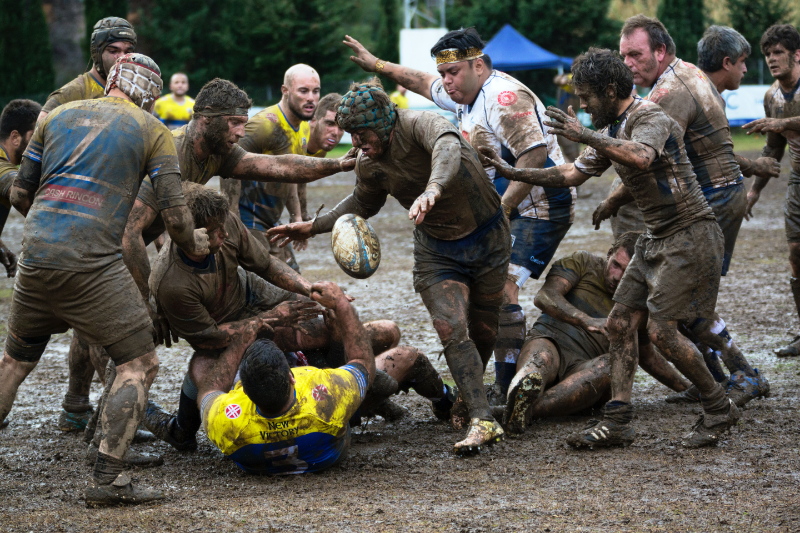
Of Boys and Men: STEM Careers, Gender Equality Paradox, and Pay Gap – Part 6
It’s not that gender equality discourages girls from pursuing science. It’s that it allows them not to if they’re not interested. ~ Olga Khazan, Atlantic.
In this final blog post Of Boys and Men, I will discuss three issues that Richard Reeves addresses in his book related to gender or sex differences and the political discourse surrounding them: STEM careers, the “gender-equality paradox,” and the pay gap. Reeves’ analysis of STEM careers adds new insights. His discussion of the “gender-equality paradox” and the pay gap is based on years of prior research. The issues involved in STEM careers, the gender-equality paradox, and the pay gap are interrelated and help us further understand the boy’s and men’s crisis, especially as they reveal aggregate gender preferences.
Should We Expect 50-50 parity in STEM Careers?
There is a strong movement to get more girls into STEM (Science, Technology, Engineering, and Math). Women now account for 45% of the life and physical scientists working in the U.S., up from fewer than 20% in 1980. Among engineers, the proportion of women has risen from 4% to 15%. The tech industry has seen much smaller gains in recent decades, with women’s representation stuck at about 25%. Overall, women now account for 27% of workers in these occupations, up from 8% in 1970. [1]
But should we expect 50-50 parity in these jobs?
Men Will More Likely Choose STEM Career Paths
Reeves says we should not expect parity in STEM jobs because, “on average, men are more attracted to things, women to people.” Even under conditions of perfect gender equality, more men than women will likely choose STEM career paths, not because of sexism or socialization but because of fundamental differences in preferences.
Gender-Equality Paradox
In 2018, two researchers, Gijsbert Stoet and David Geary, showed that women in more gender-equal countries like Finland and Norway were less likely to take university courses in STEM subjects. Stoet and Geary called this the “gender-equality paradox.” They speculated that in countries with high incomes and strong welfare states, the economic incentives to pursue STEM careers might be lower, allowing women to choose courses and jobs that more closely match their personal preferences. Stoet and Geary found a similar pattern for sex differences in expected occupations among adolescents in OECD countries. [2].
Greater Opportunity to Express Inherent Biological Differences
Researchers Armin Falk and Johannes Hermle studied sex differences in specific preferences, such as a willingness to take risks, patience, altruism, positive and negative reciprocity, and trust, across a range of countries. They concluded that “a more egalitarian distribution of material and social resources enables women and men to independently express gender-specific preferences.” In another study, researcher Petri Kajonius got a similar result. He speculated:
A possible explanation is that people in more progressive and equal countries have a greater opportunity to express inherent biological differences.
The gender-equality paradox demonstrates that greater sexual freedom and gender equality produce larger, not smaller, psychological sex differences.
American Income Gains Due to Rise in Female Earnings
Reeves reports that forty percent (40%) of women now earn more than the typical man, up from just 13% in 1979. “All the income gains that middle-class American families have experienced since 1970 are due to the rise in women’s earnings.”
Women Account for Over Half of the Managerial Positions in the US
Women account for nearly 52% of all management and professional-level jobs in the U.S. economy. [3] Many previously male-dominated professions, including medicine and financial management, are rapidly tilting female, especially among younger professionals. The proportion of female lawyers has increased tenfold, from 4% in 1980 to 43% in 2020. Most revealing, if not astounding: women are currently in charge of the law review and law journal at ALL top sixteen law schools in US. [4]
Unmarried and Childless Women Under 30 Make More Than Men
The Research Advisor Group found (2010) that unmarried childless women under 30 make 8% more than men of that age group in the largest American cities. The gap in NYC, Los Angeles, and San Diego was 17%, 12%, and 15% respectively. According to recent studies and trends reported by Reeves, these gaps have gotten wider since 2010.
The Pay Gap Evaporates Under Scrutiny
Conservatives point to studies showing that once a range of factors is considered – hours, industry, experience, seniority, and location – the pay gap evaporates. This is supported by research that appeared in the Journal of Economic Literature (2021).
Women Work Different Jobs with Fewer Continuous Hours
To his credit, Reeves quotes the foremost authority on the pay gap, Harvard economist Claudia Goldin. She is never cited or positively viewed by the feminist Left. The factors listed above concern what Goldin calls “occupational segregation” and “temporal inflexibility.” This means the aggregate pay gap of 82% for women across the economy is caused by women working in different jobs and not as many continuous hours.
Reeves says, “there is certainly very little evidence that women are paid less than men for doing the same work in the same way.” He continues:
Women are paid less because they do different work, or work differently, or both.
Reeves’ statements could be argued anecdotally or on the margins – but the research supports them.
Women Are Clustered in Lower Paying Jobs
Reeves points out that women are more clustered in lower-paying occupations and industries. That, he says, explains a third of the pay gap. “Clustering in lower-paying jobs” is occupational segregation.
Reeves Claims Institutional Sexism But Does Not Elaborate
There may be some evidence of bias toward hiring men (instead of women) in some occupations, but it is hard to prove. Reeves says institutional sexism (against women) exists, but he does not define what that is or cite research on that point. He has the most to say about the bias against hiring men in elementary education.
His claim of institutional sexism (against women) could be anchored to studies that try to uncover unconscious gender stereotypes for first-time leadership applicants, but that research was perhaps too far afield of his central message. His claims of institutional sexism seem, in this case, to be a bit of virtue signaling for his audience.
Reeves Puts Adjusted Pay Gap at 5% – But Does Not Give Detail
Reeves says various studies put the adjusted gender pay gap at about 5%. He must mean the gap caused by bias and discrimination, but he does not fully explain the various causes or examples that create this 5%. Even 5% is vastly different from the war cry of a gender pay gap of 18% caused by discrimination. It is just not true.
The Pay Gap is a Parenting Gap!
Most importantly, as repeated over and over by Goldin and other economists, the pay gap is a parenting gap! The gap between the time men versus women give to parenting is partly what is meant by “temporal inflexibility.”
Women take time off to raise children, drop out of a career trajectory, and reduce the number of hours worked. There is also some occupation segregation going on — women choose different jobs when they are raising children.
The earnings potential for women who do not have children looks similar to that for men.
~ Richard Reeves
The Bus and Train Drivers Study
In a study of bus and train drivers working for the Massachusetts Bay Transportation Authority, Harvard economists Valentin Bolotnyy and Natalia Emmanuel found that women, on average, earn $0.89 for every dollar earned by male peers.
But their analysis revealed that this pay gap “can be explained entirely by the fact that, while having the same choices in the workplace, women and men make different choices.”
The men were twice as likely to work overtime (which pays extra), even on short notice. They also took fewer hours of unpaid leave. Among train drivers with children, the gaps were even wider. Fathers wanted more overtime pay; mothers wanted more time off.
Women Reduce Hours If Their Husbands Make the Bucks
Not surprisingly, in another study of University of Chicago MBAs, women with the highest-earning husbands were most likely to reduce their working hours.
Few Women in the C-suite – a Red Herring?
Reeves says more work is needed for women’s economic success. He cites that only one in five C-suite company directors is a woman, and just 41 of the 500 Fortune 500 firms have a female CEO. He seems to forget what he just “learned” from Claudia Goldin and others that explain that differential.
How Many Women Want to be C-suite Directors?
How large is the pool of women who want to be C-suite directors and are qualified in direct comparison to men? How many women have worked enough continuous hours on a career trajectory to legitimately compete for those positions?
Yes, Women Are Equally Talented, But…
I would be the first to say that many of these women are equally talented, if not more so, than the men around them. I would be the first to say that we would be better off as a country if more women were in positions of leadership. But women have to want this – and there is one singular correction:
Change corporate culture to support working mothers – provide more paid childcare, after-school care, and leave without a penalty to their career. That is how to correct the pay/parenting gap!
Mate Selection Preference is the Undiscussable Infrastructure of the Gap
Here is what is “undiscussable:” women must be more willing to partner with and sexually desire men who make less money than them to close the aggregate pay gap and pay differentials in top management. Women may need to prefer men who will stay home and not make any money.
But, as long as women prefer to mate with men at the top of the corporate hierarchy, men will continue to work long, uninterrupted hours and compete against each other to be in the C-suites. The gap at the top will remain intact.
Notes
[1] The trend has been the other way regarding male representation in health, education, administration, and literacy (HEAL) jobs. In 2019, 26% were held by men, down from 35% in 1980, for full-time workers aged between 25-54.
[2] OECD (Organization for Economic Cooperation and Development) countries include Belgium, Czech Republic, Denmark, Estonia, Finland, France, Germany, Greece, Hungary, Iceland, Ireland, Italy, Latvia, Lithuania, Luxembourg, Netherlands, Norway, Poland, Portugal, Slovak Republic, Slovenia, Spain, Sweden, Switzerland, and the United Kingdom.
[3] U.S. Bureau of Labor Statistics, “Labor Force Statistics from the Current Population Survey (2018),” as reported in The Women’s Leadership Gap, November 20, 2018.
[4] 16 top law schools ranked by U.S News and World Reports that have women in charge of their law reviews and law journals: Harvard, Yale, Stanford, Georgetown, Duke, University of Chicago, Columbia, NYU, University of Pennsylvania, University of Virginia, University of Michigan, Northwestern, C. Berkeley, Cornell, UCLA, and University of Texas, Austin.
Appendix
Moody’s (just released) March 2023 Report on Gender Management Gap
Moody’s Analytics released (March 2023) their report “Close the Gender Gap to Unlock Productivity Gains.” The report is focused on the proportion of women in senior and middle management positions, stating that improving gender parity in management positions can unlock higher economic prosperity, particularly in developing nations. Moody’s makes the undisputable observation that women have much lower representation in mining and construction than in health, social work, and education. Their data shows that women are 67.1% of leadership in health and social work and 61% in education. Moody’s opines that women achieve higher educational attainment than men but are significantly underrepresented in middle and senior management roles – causing an “underskilling” of women. Moody’s outlines the different choices made by women in education and work, but does not acknowledge the predictable lack of leadership in fields that women choose not to enter. Some pundits point to this report as evidence of gender biases or inequalities that have placed women in lower-paying occupations. Yet, there is no evidence in this report that women are placed (or forced) into lower-paying occupations. Moody’s says women are less likely to ask for promotions (as supported by other studies) and that women are held to higher standards than men. But no examples of the latter are in this report. (I have addressed related challenges for women in Double Bind Dilemmas for Women in Leadership.) Where Moody’s hits a home run is in recognizing what Richard Reeves outlines in Of Boys and Men. Moody’s says, “such policies as enforcing flexible working conditions, providing affordable childcare [including after-school], and providing maternity and paternity leave can help to drive change in the right direction.”




